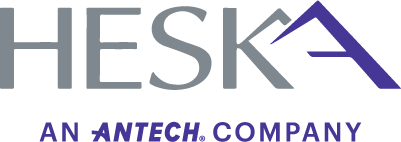Congratulations!! You’re pregnant … Now what?
It can be tough to be pregnant in the veterinary world. There are a lot of expectations in our field to be constantly on our feet, lifting heavy dogs, handling unvaccinated animals, taking radiographs, etc. It’s important to speak up and let your team know what you can and can’t handle. A meeting with your doctor can help you determine if there are any specific limitations for your personal health. Along with any individual restrictions, here are some things to keep in mind as you go about your day to day in the clinic.
Waste Anesthetic Gases
It is important to always to follow proper safety precautions when anesthetizing animals, but even more so when pregnant. Exposure to waste anesthetic gases has been associated with an increased rate of spontaneous abortions and congenital abnormalities.There is a high risk of exposure to waste anesthetic gases during patient induction (especially masking or chamber box) and recovery. If possible, it would be ideal to hand these tasks off to another staff member to avoid risk of exposure. In the likely event that this is not a possibility, the following safety precautions are important to remember.
- Vapor respirators can be purchased and worn as an extra barrier.
- Leak test your machine before every procedure.
- Use a passive or active scavenger system.
- Inflate the patients ET tube cuff prior to turning on gas anesthetics.
- Recover the patient with oxygen while hooked up to the anesthetic machine to allow for the exhalation of built up gases to be collected by the scavenge.
- Avoid masking or boxing down patients atall costs – if absolutely necessary, ensure a good seal on the box or use the proper sized mask for the patient.
Radiographs
Taking x-rays during pregnancy puts a fetus at great risk as ionizing radiation is especially damaging to cells that are in stages of rapid change. Exposure to ionizing radiation can have severe effects ranging from stunted growth, birth defects, mental retardation, increase risk of cancer, and even fetal death depending on the time of exposure during development.
Exposure should be avoided completely if possible. If a pregnant woman must take an x-ray, she should protect herself completely as any other employee should, with use of protective shielding and monitoring badges. The Ontario Health and Safety Act, as well as The United States Centers for Disease Control and Prevention, and The Nuclear Regulatory Commission specify a reduced exposure limit of 5 mSv throughout a woman’s entire pregnancy.
Toxoplasmosis and other Zoonotic Risks

Toxoplasma is commonly known zoonotic disease with most kitty litter bags carrying warnings about the potential risk to humans, as it can be transmitted through ingestion of oocytes found in cat feces. Toxoplasma can also be contracted most commonly through ingestion of undercooked meat, as well as poorly washed fruits and vegetables, and contact with contaminated soil. If infected, approximately 10% of women give birth to a severely affected child, with the possibility of hydrocephalus, mental impedance, blindness, or epilepsy. In cat feces, oocytes take 48 hours to become infective, so regular cleaning of a litter box while wearing gloves and washing hands can drastically reduce chances for transmission.
Other potential zoonotic risks include (but are not limited to) salmonella, leptospirosis, brucellosis, listeriosis, Venezuelan Equine Encephalitis, Psittacosis, giardiasis, and Lymphocytic choriomeningitis. These zoonosis’ can cause either direct impact to the mother and fetus or indirect impact through their treatment methods and medications.
Personal protective equipment and frequent hand washing are essential in reducing the risks of transmission.
High Risk Patients
While no one wants to be seen as shying away from work, there are certain patients where contact should be avoided when possible. As always, infectious patients and chemotherapy patients as well as their bodily fluids should be handled with the utmost care and use of personal protective equipment. Aggressive patients and patients who are not rabies vaccinated should be avoided in order to reduce the risk of scratch and bite wounds that would require antibiotic treatment, which could harm a developing fetus.
Bone Cement/Noxious Chemicals
Bone cement is usually used more frequently in specialty and referral clinics, and during mixing it can produce very strong fumes. The FDA has stated that there may be adverse effects on bone growth and general fetal health with exposure to these fumes. Other noxious chemicals could be detrimental as well, so be sure to read MSDS sheets for products used within your clinic and whenever possible, avoid exposure.
 Handling Medications
Handling Medications
There are certain medications where special handling is always of utmost importance and obviously even more so when pregnant. Reproductive drugs, hormones, immunosuppressant medications, pesticides, antibiotics (chloramphenicol and cyclosporine), and chemotherapy drugs all require special handling and clean up. When possible, have another team member prepare and administer these medications and otherwise use chemotherapy gloves while handling medications to help reduce exposure risks.
Pregnancy can be a very exciting but also very physically straining time in your life. Take good care of yourself and ask for help from others when needed!
References
Occupational safety and health administration: Anesthetic gases: Guidelines for Workplace Exposures. opens in a new windowwww.osha.gov/dts/ osta/anestheticgases Mckelvey D, McCurnin DM (ED): Clinical Textbook for Veterinary Technicians, ED 4. Philadelphia, WB Saunders, 1998. U.S. Food and Drug Administration. FDA. Class II Special Controls Guidance Document: Polymethylmethacrylate (PMMA) Bone Cement; Guidance for Industry and FDA. Dubey JP. Toxoplasmosis in sheep, goats, pigs and cattle. In Dubey J, Beattie C, eds Toxoplasmosis in animals and man. Boca Raton, Florida: CRC Press. 1988. pp. 61–114. Carter AO, Frank JW. Congenital toxoplasmosis: epidemiological features and control. Can Med Assoc J. 1986;135:618–23. McLain Madsen L. Pregnancy in the Workplace. Veterinary Technician. 2005: 26: 10 www.motherrisk.org

